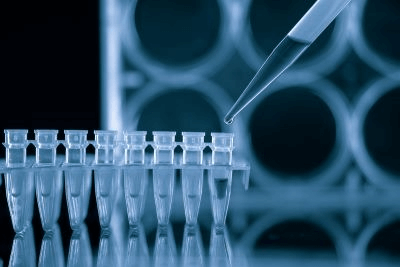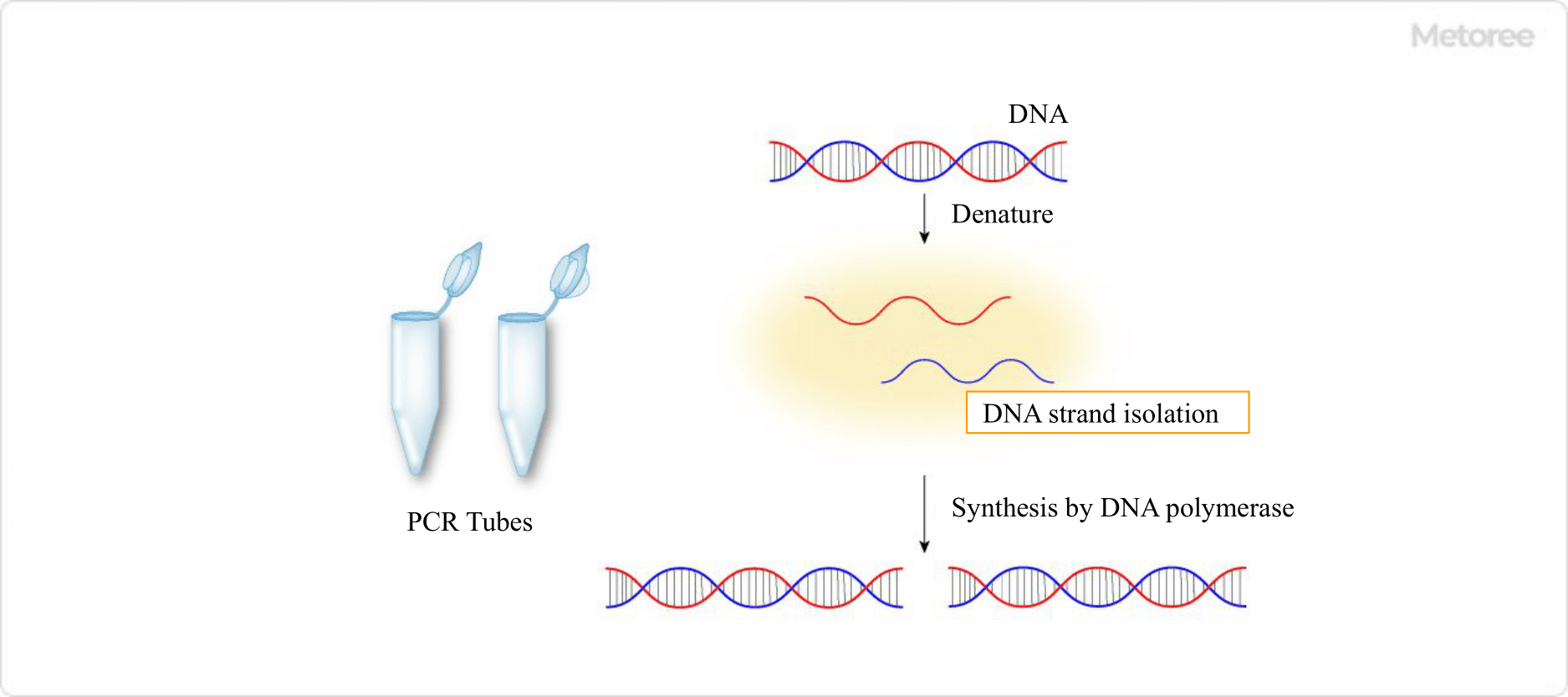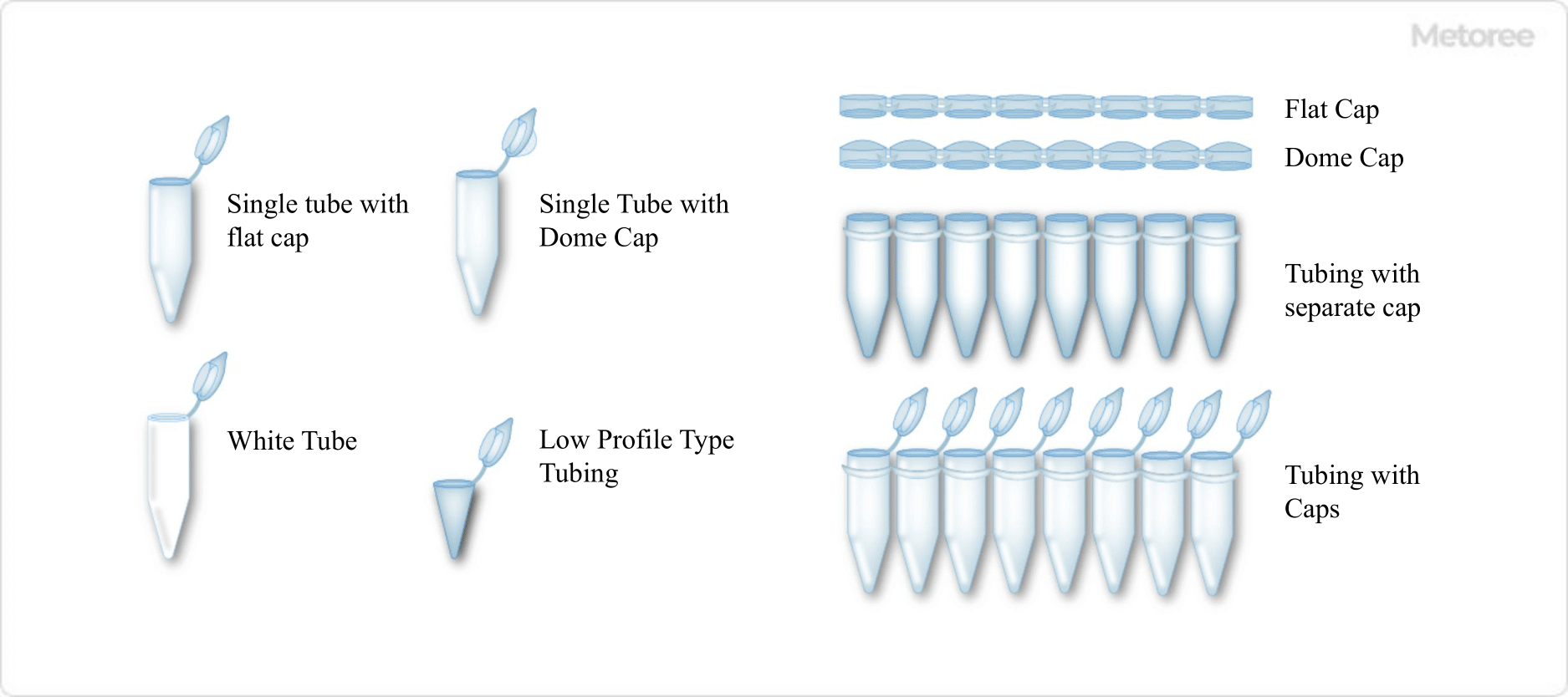




5 PCR Tube Manufacturers in 2024
This section provides an overview for pcr tubes as well as their applications and principles. Also, please take a look at the list of 5 pcr tube manufacturers and their company rankings. Here are the top-ranked pcr tube companies as of April, 2024: 1.Biologix Group Limited, 2.Albéa Group, 3.BrandTech Scientific, Inc..
Table of Contents
What Is PCR Tube?

PCR Tubes are plastic tubes made specifically for use in PCR experiments. Polypropylene is usually used as the material, and a wide variety of sizes, shapes, and colors are available.
Uses of PCR Tubes

Figure 1. PCR tube and principle of PCR
PCR is an acronym for polymerase chain reaction, a technique that uses DNA polymerase to amplify a target DNA sequence from one to several million copies in a short period of time. Specifically, the series of reactions 1-3 below are called "cycles," and by repeating 25-35 cycles, copies of the target DNA are synthesized exponentially.
- Denaturation: The double-stranded DNA template is heated to separate the DNA strands
- Annealing: short DNA molecules called primers are attached to adjacent regions of the target DNA
- Elongation: DNA polymerase synthesizes complementary strands of the template in the 3′-end direction starting from each primer
The device used to automatically control the temperature cycle and incubation time in PCR is a thermal cycler; PCR Tubes are manufactured for use in a thermal cycler. In order to select the correct PCR Tube, it is necessary to correctly understand the specifications of the thermal cycler you will be using.
In addition, since there are various types of PCR such as standard PCR, gradient PCR, real-time PCR, and qPCR, it is necessary to select the appropriate PCR for your purpose. At the same time, it is also important to properly prepare the experimental apparatus and reagents according to the type of experiment.
Structure of PCR Tube

Figure 2. Various PCR tubes (Single tube) / Figure 3. Example of 8-row PCR tube
Polypropylene is usually used as the material. Polypropylene is chemically inert and can withstand rapid temperature changes during thermal cycling. In addition, the tube walls are manufactured to be thin and uniform to enhance heat transfer from the thermal cycler.
In addition, they are manufactured with the utmost care to ensure that they are free of dust and impurities such as endonucleases, pyrogens, DNA, lubricants, dyes, heavy metals, and fillers. This is because if the product becomes contaminated during manufacturing, dust particles can remain and interfere with PCR, or DNA fragments can serve as templates for nonspecific amplification, resulting in reduced experimental accuracy.
The structure consists of a tube portion that holds the sample and a cap portion, and is available in a single type with one separate tube, or an 8- or 12-tube type with multiple tubes.
There are two types of cap shapes: flat and domed, one with one cap per tube, and one with multiple caps in a row, which are separate from the tube.
There are two types of tube sections, one with a normal height (standard profile) and the other with a lower height (low profile). In addition to the transparent clear type, white ones are also available.
How to Select PCR Tubes
It is important to choose according to the type of experiment and to use the appropriate one for the thermal cycler you are using. For example, clear tubes (transparent type) make it easy to check the contents, while white tubes increase the sensitivity of qPCR by preventing fluorescence from refracting and diffusing outside the tube.
Domed caps allow rapid heat transfer from the thermal cycler, while flat caps can be marked with a marker and are easier to puncture with a needle during sample collection.
Low-profile tubes with a lower height minimize the space area in the reaction vessel, thus reducing the effects of evaporation and increasing the thermal conductivity compared to normal ones. Low-profile tubes are sometimes referred to as fast tubes because they are compatible with fast thermal blocks.
PCR Tubes are suitable for small- to medium-scale PCR experiments, and when the scale is larger, PCR plates are appropriate.
List of 5 PCR Tube Manufacturers
*Including some distributors, etc.
Sort by Features
- Default
- Company Size: largest first
- Year Founded: oldest first
- Year Founded: earliest first
Sort by Area
- United States of America
- China
- France
-
-

-
BrandTech Scientific, Inc.
PCR Tubes
Company Overview
BrandTech Scientific was founded in 1996 and is headquartered in Essex, Connecticut. BrandTech Scientific supports laboratory sciences as a distributor for German-made supplies in Canada and the United States. BrandTech Scientific’s products include categories such as liquid handling including pipettes and instrumentation, life science such as PCR products and microplates, laboratory vacuum such as rotary vein pumps, lab support jacks, lab ware such as test tube racks, volumetric lab ware hardware and software, and lab rat gear, as well as offering vacuum pump selection guides.
-
-
-
-

-
Biologix Group Limited
PCR Tubes
Manufacturer Overview
Biologix Limited Group was established in 2007 and is located in Shandong, China. The company is a manufacturer of disposable medical detection reagents and supplies. The company's range of products includes PCR and Cell Culture consumables, Virus detection kits, Industrial Storage Containers, and COVID-19 Nucleic Acid Detection kits. The company is also into the R&D of disposable medical detection reagents. Biologix is also an OEM provider of plastic laboratory consumables and has locations in Europe and the United States.
-
-
-
-

-
Albéa Group
Ultimate PCR tube
Manufacturer Overview
Albéa Group, established in 2004 and headquartered in Gennevilliers, France, is a manufacturer of packaging and cosmetic solutions. The company manufactures a broad range of products, including packaging solutions for beauty and personal care such as cosmetic tubes, fragrance components, and dispensing systems. It holds ISO 9001 and ISO 14001 certifications, and the products boast features of advancement, design flexibility, and eco-friendly materials, aligning with the growing demand for sustainable packaging. Serving various industries, including beauty, personal care, and pharmaceuticals, its solutions serve the evolving needs of brands and consumers.
-
-
-
-

-
Zhejiang Rongda Biotechnology Co., Ltd.
PCR Tubes
Company Overview
Zhejiang Rongda Biotechnology Co., Ltd., established in 2018, is a manufacturer of Cell Freezing Tubes and supplier of 2D Cryogenic Vials, headquartered in Huangyan, Taizhou, China. The company’s product line ranges of essential products, including cell freezing tubes, centrifuge tubes, pipette tips, PCR tubes, and more. They are also ISO13485, FDA, and CE certified. Under the AMNGENT brand, their services are more centered on cell culture, molecular biological consumables, diagnostic reagents, and safety management. Their products are exported to over 80 countries, including the United States and the European Union. They offer customized services, both OEM and ODM.
-
-
-
-

-
Biobase Biodusty, Co., Ltd.
PCR Tubes
Company Overview
BIOBASE, established in 1999, is a high-tech manufacturing enterprise whose business covers biomedical, e-commerce, intelligent manufacturing, scientific equipment In Vitro Diagnosis (IVD) instrument and reagent based in China. Specialized in research, development, and manufacturing of laboratory and medical equipment, catering to life sciences, healthcare, and environmental protection industries. Their product range includes biological safety cabinets, incubators, centrifuges, and more. The company has branch offices in 24 provinces in China, with overseas establishment in USA, Dubai, India, Algeria, Singapore, and business partners in 130 countries.
-
-
PCR Tube Manufacturer Ranking
*Including some distributors, etc.Ranking as of April 2024
Derivation Method| Rank | Company | Click Share |
|---|---|---|
| 1 | Biologix Group Limited |
35.0%
|
| 2 | Albéa Group |
25.0%
|
| 3 | BrandTech Scientific, Inc. |
25.0%
|
| 4 | Zhejiang Rongda Biotechnology Co., Ltd. |
15.0%
|
Derivation Method
The ranking is calculated based on the click share within the pcr tube page as of April 2024. Click share is defined as the total number of clicks for all companies during the period divided by the number of clicks for each company.Number of Employees
- Albéa Group: 13,000
Newly Established Company
- Zhejiang Rongda Biotechnology Co., Ltd.: 2018 (6 years ago)
Company with a History
- Zhejiang Rongda Biotechnology Co., Ltd.: 2018 (6 years ago)
PCR Tube Manufacturers in United States
*Including some distributors, etc.
Global Distribution of PCR Tube Manufacturers by Country
*Including some distributors, etc.
| Country | Number of Companies | Share (%) |
|---|---|---|
 China
China
|
2 | 50.0% |
 United States of America
United States of America
|
1 | 25.0% |
 France
France
|
1 | 25.0% |
List of PCR Tube Products
2 products are listed.
Cell Diagnostics joint company
PCR tube 0.2ml
■ Characteristics ・ Because the wall is thin and uniform, it has excellent thermal conductivity. Therefore, it enables efficient PCR amplification...
